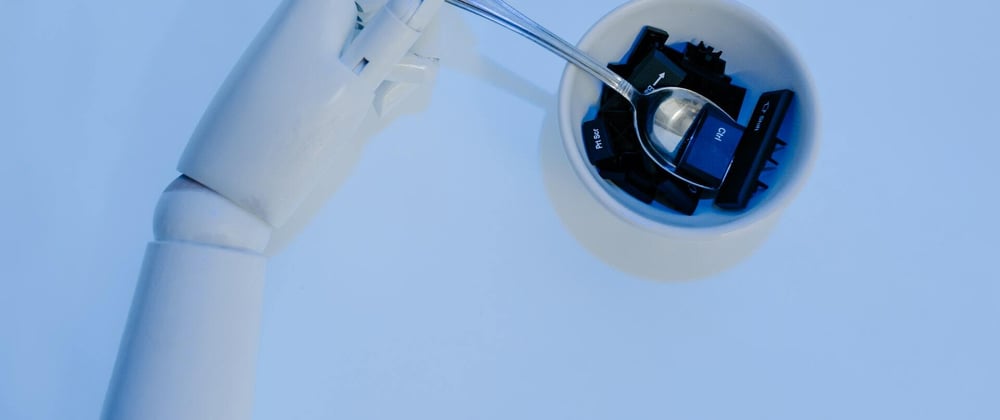The United Nations recently released their 2019 World Population Prospects, in which they stated that by the year 2050 it is expected that the earth will reach a massive 9.7 billion people, and level off around the turn of the century at 11 billion. With a rapidly increasingly population there is going to need to be a better way to produce more food, right now agricultural workers are the backbone of this global food industry. Most of what we eat originates from a farm. With the amount of arable land being fixed, farmers cannot simply expand their fields to meet this new demand. Artificial intelligence in agriculture is the solution the agriculture industry is in need of – it is a rapidly developing field that is helping farmers optimize their yields and reduce the consumption of resources.
An example of this is using technology enhanced with artificial intelligence (AI) to reduce the amount of yield lost to pests. Particularly in warmer climates, insects can burrow inside and multiply to destroy crops. Most farmers in the US spray all their crops with a layer of pesticide to keep insects at a minimum, but these chemicals can be expensive and are potentially harmful to the consumer. A study conducted by the USDA called “Pesticide Use in U.S. Agriculture: 21 Selected Crops, 1960-2008” reports that farmers are spending almost $12 billion on chemicals annually – nearly five times the amount used in 1960, adjusted for inflation. In another study, “The impact of crop protection on agricultural production” from AgEcon in 2011, found a global average of 35% of crops are lost due to pre-harvest pests. This figure can reach 70% in developing countries. Kansas State University is working on a solution to this problem. They recently received almost $900,000 in grants from the US Department of Agriculture and have been developing machines that can detect high concentrations of insects and apply the pesticides in a more accurate way. Artificial intelligence can detect where these concentrations occur and send signals to the brain of the computer, which activates a spray of pesticides to eliminate the group of insects. These are early stages for the new ways of keeping crops pest-free, but AI may be the solution that farmers need. Contrary to the old system, pesticide will be applied directly to the areas that need it to drastically cut the volume of chemicals needed and reduce amount of drift that reaches other crops.
These modern solutions have generated interest in industry leaders, who are already investing big money into them. Larger corporations are taking notice and are looking to new pioneering ways smaller companies are creating to farm crops. California startup Blue River Technology is developing “See and Spray,” a project very similar to what Kansas State University is working on. Caroline Osterman from Berkley Engineering says that instead of targeting insects, the robots seek out weeds and unwanted plants to directly apply the herbicide. These plants are a problem because they compete with the desired crops for limited space and water. Jorge Heraud, CEO of Blue River, explains the machine travels 12mph while gathering information about the plants, and uses computer vision and AI to decide where to apply the herbicide. This new technology may seem relatively ineffective in the massive scale of the agriculture sector, but some big names in the industry are suggesting otherwise. In 2017, Blue River Technology was acquired by John Deere for $305 million. This is a major step in the world of developing technology and has a promising future. John May, president of agricultural solutions and chief information officer at Deere, related the investment into Blue River as being similar to the highly successful 1999 acquisition of NavCom – the early developers of GPS technology. This established John Deere as a household name and changed much of the ways farming is done today, something May believes Blue River will continue to do.
From an opposing viewpoint, the concept of robots stealing our jobs is often stated as a reason this technology should be heavily stifled from progressing. While that may be a viable concern for some industries, AI will fill the gaps where people don’t want to. In recent years farmers have been finding it difficult and expensive to attract workers willing to do this type of labor. In April the California Farm Bureau Federation released the survey “California farms face continuing employee shortages.” In this study they found at least 56% of farmers have not been able to hire enough employees at some point within the last five years. Further, at least 70% of those farmers have reported worse shortages within the last two years. There are several reports that paint the same picture: the amount of people who are willing to do this type of work is decreasing. The California surveys are particularly concerning because the state has the largest agriculture market in the US and is the main supplier of fruits and vegetables for the country. Even with increased wages, farmers have been unsuccessful. Steven Zahniser from the USDA says real wages (inflation adjusted) for nonsupervisory hired farmworkers rose 10.4% over the period of four years from 2014- 2018. This was the fastest increase the agriculture market has seen in the past two decades. The argument that AI is stealing these agricultural jobs simply does not make sense if we are already losing them in the first place. In a Scientific American article by Geoffrey Ling and Blake Bextine named “Precision Farming Increases Crop Yield” it is pointed out that replacing people with machines will improve time management for farmers as a result of being able to provide them with useful information about where and when to plant certain crops. An AI development company can help with these tasks.
Another concern, pointed out particularly by environmentalists, is that farmers are using too much water – something many small companies have set out to improve using AI. Much of the fresh water used on farms comes from underground aquifers that are being drained much faster than they can be replenished. According to a 2010 study by the Food and Agriculture Organization of the United Nations, nearly 70% of global fresh water withdrawals were used in agriculture, most of which is being used for irrigation. Many current irrigation systems run on an hourly basis, which is inefficient and unfortunately allows much of this water to be wasted on crops that don’t need it. Marco Bezzi, CEO and co-founder of the company BlueTentacles, is using AI paired with satellite and historical data to optimize the ways in which water is being used to irrigate crops. In an interview with Jordan French from GritDaily, Bezzi explains “BlueTentacles’ solution is scalable worldwide and the best places to run it are all the places in the world where it is possible to acquire that data.” This allows the system to be widely available and able to be directly implemented onto original irrigation infrastructure. All the farmer needs to do is acquire the software online, and BlueTentacles collects the unique input data from the area. The software hooks up with the BlueTentacles AI in the cloud to best determine how to irrigate the crops. Bezzi says it can work worldwide for any type of agriculture as long as there is the data available to run it reliably. Many smaller farmers who can’t afford to get ahold of high-tech machines that are being developed today could benefit greatly from services like BlueTentacles. It is easy to purchase and use, and larger commercial-run farms won’t be the only ones who are able to take advantage of it. Even in areas where lots of data is not available, the AI will provide farmers with satellite information and forecasts from nearby weather stations to help conserve water on their own. In French’s words, BlueTentacles aim is to “arm farmers with artificial intelligence to turn on the water only when necessary.” As this technology is improved upon other avenues may be opened up to give farmers around the world the chance to optimize the use of other resources. This solution is a real cost-effective way to approach agriculture in a different light.
Eventually farmers are going to have to find a way to produce more food for the growing global population. “Precision farming” may be the solution, in which AI is used to target the individual needs of every plant to minimize the amount of resources that are being used and increase yield. Kansas State University is working with the Department of Agriculture to create robots that can apply insecticide to certain areas on the field. Blue River Technology has already developed similar herbicide robots and recently partnered with John Deere. BlueTentacles is utilizing AI to allow farmers to make drastic cuts in the amounts of water they are using for irrigation. As it stands currently, artificial intelligence is becoming more widely adopted in the agriculture industry, because people are realizing the benefits it can bring to the table. Precision farming should continue to receive more attention and development in the future because it can help to feed the next generation, as well as conserve resources and cut costs.







Top comments (0)